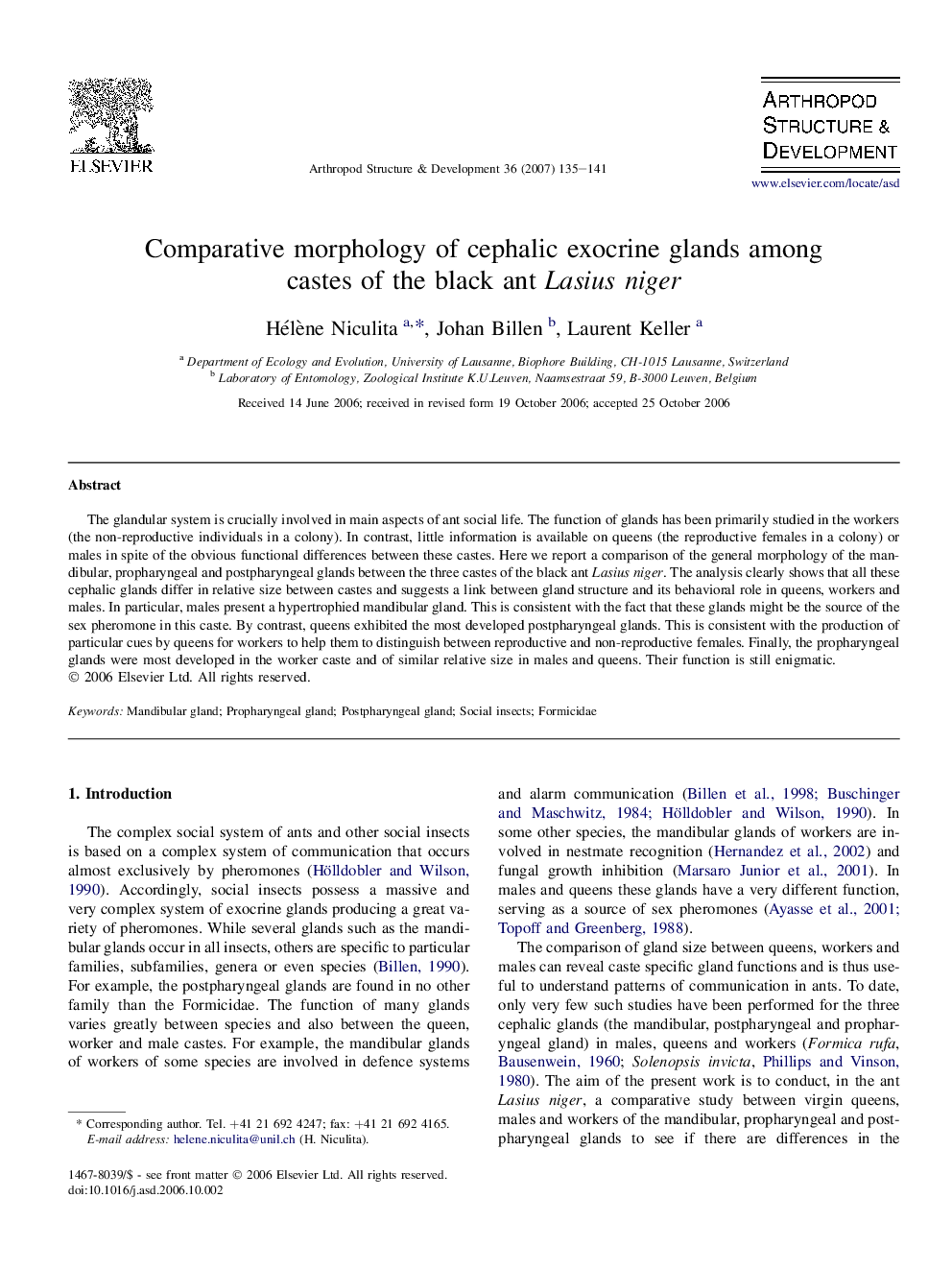| Article ID | Journal | Published Year | Pages | File Type |
|---|---|---|---|---|
| 2778990 | Arthropod Structure & Development | 2007 | 7 Pages |
The glandular system is crucially involved in main aspects of ant social life. The function of glands has been primarily studied in the workers (the non-reproductive individuals in a colony). In contrast, little information is available on queens (the reproductive females in a colony) or males in spite of the obvious functional differences between these castes. Here we report a comparison of the general morphology of the mandibular, propharyngeal and postpharyngeal glands between the three castes of the black ant Lasius niger. The analysis clearly shows that all these cephalic glands differ in relative size between castes and suggests a link between gland structure and its behavioral role in queens, workers and males. In particular, males present a hypertrophied mandibular gland. This is consistent with the fact that these glands might be the source of the sex pheromone in this caste. By contrast, queens exhibited the most developed postpharyngeal glands. This is consistent with the production of particular cues by queens for workers to help them to distinguish between reproductive and non-reproductive females. Finally, the propharyngeal glands were most developed in the worker caste and of similar relative size in males and queens. Their function is still enigmatic.
